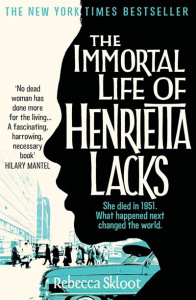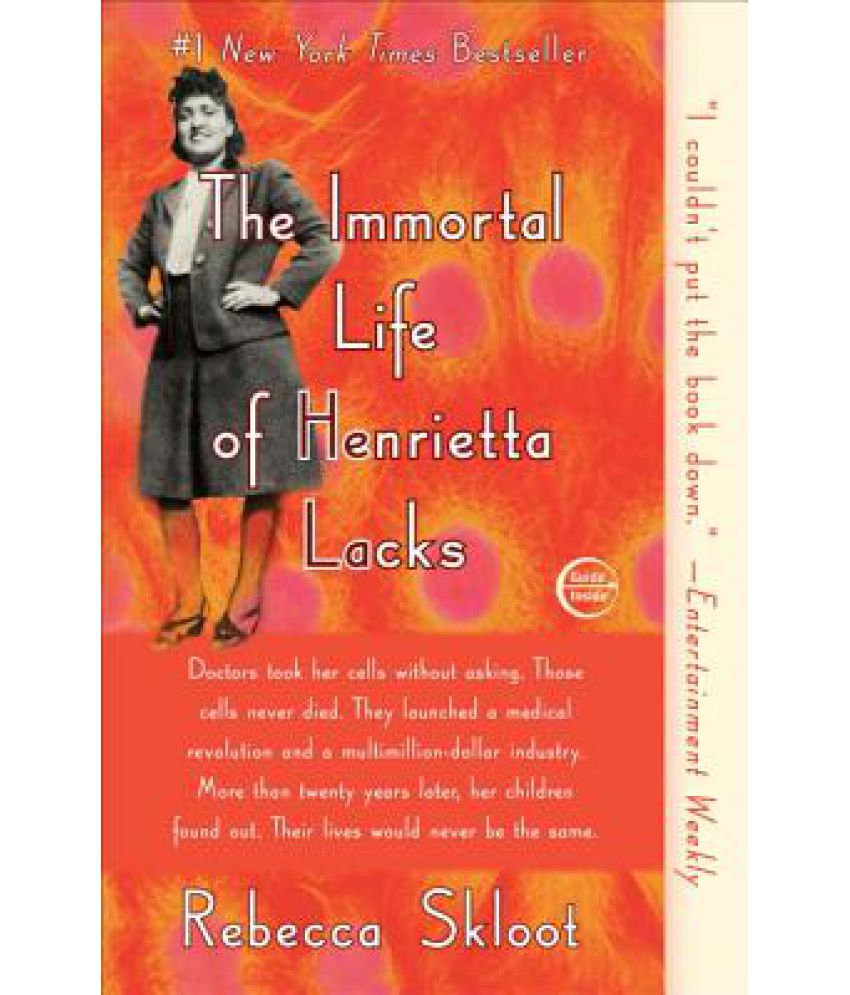
Skloot began conducting extensive research on her and worked with Lacks' family to create the book. Skloot became interested in Lacks after a biology teacher referenced her but knew little about her. The book is about Henrietta Lacks and the immortal cell line, known as HeLa, that came from Lacks's cervical cancer cells in 1951. It was the 2011 winner of the National Academies Communication Award for best creative work that helps the public understanding of topics in science, engineering or medicine. Fifth St., Los Angeles CA 90071 or call (213) 228-7272.The Immortal Life of Henrietta Lacks (2010) is a non-fiction book by American author Rebecca Skloot. Make a donation by check to the Los Angeles Public Library and send it to:.Foundation members receive a variety of benefits with their membership. The Library Foundation is a non-profit organization that raises funds for Library enhancement programs such as adult and early literacy, children and teen reading clubs, technology, and cultural programs. Join the Library Foundation of Los Angeles.For more information click here or talk to your local librarian. Friends groups raise money for improvements to their library through memberships, used book sales and other activities. There is a “Friends of the Library” group for most branch libraries and departments of the Central Library. You can support the Los Angeles Public Library in several ways: With more people than ever before using the library-a record 17 million last year alone-your support helps the Library provide people with the resources they need to succeed and thrive.
THE IMMORTAL LIFE OF HENRIETTA LACKS PDF ONLINE FREE
Through its Central Library and 72 branches, the Los Angeles Public Library provides free and easy access to information, ideas, books and technology that enrich, educate and empower every individual in our city's diverse communities. The Los Angeles Public Library serves the largest most diverse population of any library in the United States. Overall, this book is perfect as assignment reading for high school biology classes and is also highly recommended for those who are interested in issues of race and class, and how they tie into medical research in the United States. She makes a strong point explaining the disconnect between the routine nature of tissue collection during a doctor's visit and the multimillion dollar medical research industry. She acts as equal parts reporter - gathering information about Lacks - and teacher - explaining to both the Lacks family and general readers about the impact of HeLa cells on medical research. Skloot's informal and humorous writing style makes the book entertaining, yet it also provides a sensitive look into the life of Henrietta Lacks and her family. Science writer Rebecca Skloot researches the story of Henrietta Lacks's life and family, the scientific community of the 1950s, and the ethics of tissue research - and in doing so, provides a snapshot into the lives of poor African Americans from the 1950s to the present day that helps to dramatize the changes in medical research procedures. And despite the profitable nature of this medical research, Lacks's surviving family members today live in poverty and without adequate medical coverage.


However, Lacks's cells were taken before concepts of medical consent and patient privacy gained currency, and as a result, she never knew that cells were taken from her cervix to be used for research. These miraculously duplicating HeLa cells, were instrumental in finding the cure for polio and continue to be used for research involving HPV, AIDS, and cancer. The first successful immortal cells, HeLa cells, were taken in 1951 from Henrietta Lacks, a poor African American woman with cervical cancer.

During the first half of the 20th century, medical researchers raced to discover and successfully culture these "immortal cells" - cells that duplicate themselves perfectly, continually, and efficiently. So much medical research today depends upon laboratory-grown human cells which allow researchers to perform repeatable controlled experiments that mimic the human body.


 0 kommentar(er)
0 kommentar(er)
